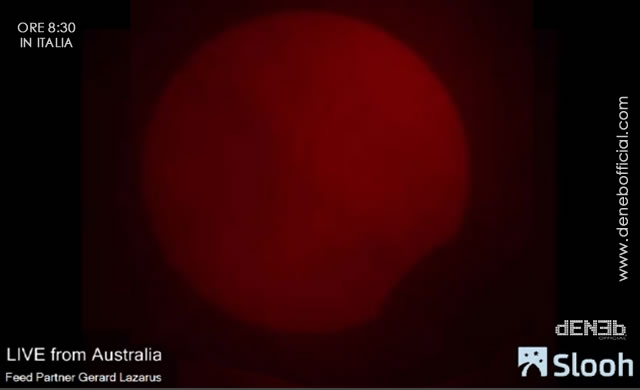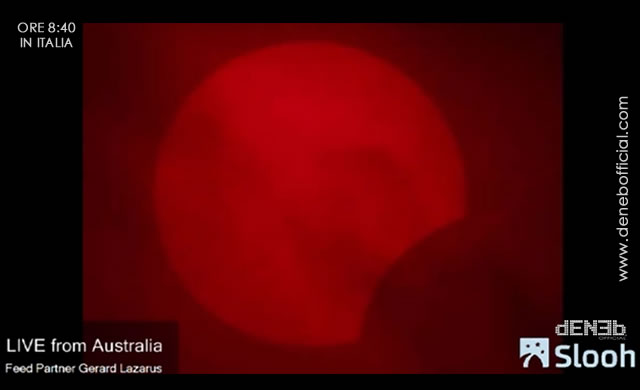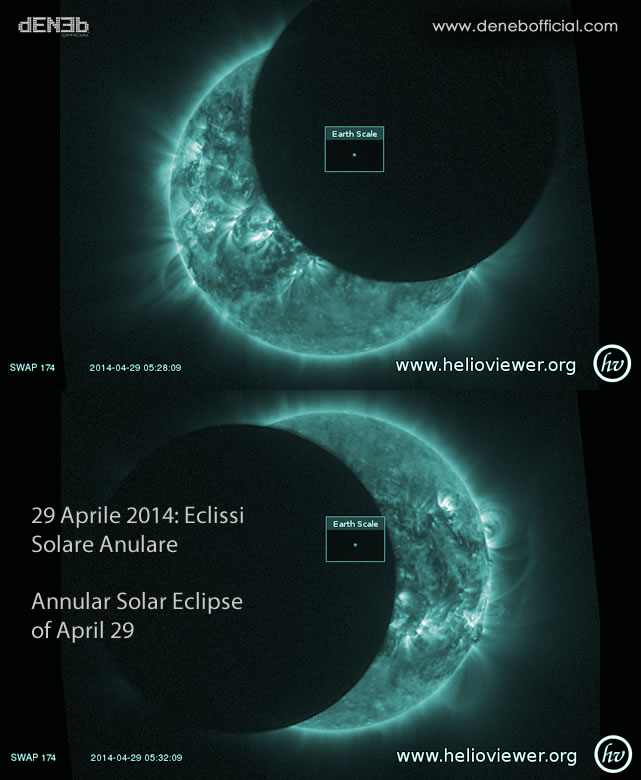
Il 29 aprile 2014 ci sarà un’eclissi solare anulare, un evento astronomico che si verificherà dalle ore 3:52 UTC alle 8:14 UTC. Sarà visibile dall’Oceania occidentale e dall’Antartide. Il punto massimo dell’eclissi sarà visibile alle coordinate 70.6S 131.3E, nel territorio antartico, alle ore 6:04 UTC. Questa particolare eclissi è piuttosto insolita in quanto l’asse centrale del cono d’ombra della Luna non prende la Terra interamente mentre il bordo dell’ombra sfiora il pianeta.
Classificati come “eclissi anulare non centrale”, tali eventi sono piuttosto rari. Delle 3956 eclissi anulari che si verificano durante un periodo di 5.000 anni solo una piccolissima percentuale pari al 1,7% sono “non-centrali”.
Restate collegati su www.denebofficial.com per assistere all’evento in diretta video dall’Australia con copertura totale a partire dalle ore 8:00 ora italiana del 29 aprile 2014. Controllate il conto alla rovescia sul video qui sotto già operativo, per sincronizzarvi. Vi aspetto!
DENEB Official ©
On the night of April 28th, Slooh will broadcast the partial phases of the now nicknamed ‘Penguin’ Annular Solar Eclipse live as it ventures over Australia. Coverage will begin on Monday, April 28th starting at 11 PM PDT / 2 AM EDT (4/29) / 06:00 UTC (4/29) – International times: http://goo.gl/JsnfCe.
An annular solar eclipse will occur on April 29, 2014. A solar eclipse occurs when the Moon passes between Earth and the Sun, thereby totally or partly obscuring the image of the Sun for a viewer on Earth. An annular solar eclipse occurs when the Moon’s apparent diameter is smaller than the Sun’s, blocking most of the Sun’s light and causing the Sun to look like an annulus (ring).
An annular eclipse appears as a partial eclipse over a region of the Earth thousands of kilometres wide. The center of the moon’s shadow misses the south Pole of the Earth, but the partial eclipse will be visible from parts of Antarctica and Australia.
This particular eclipse is rather unusual because the central axis of the Moon’s antumbral shadow misses Earth entirely while the shadow edge grazes the planet. Classified as a non-central annular eclipse, such events are rare. Out of the 3,956 annular eclipses occurring during the 5,000-year period -2000 to +3000, only 68 of them or 1.7% are non-central.



Credit: PROBA2

















